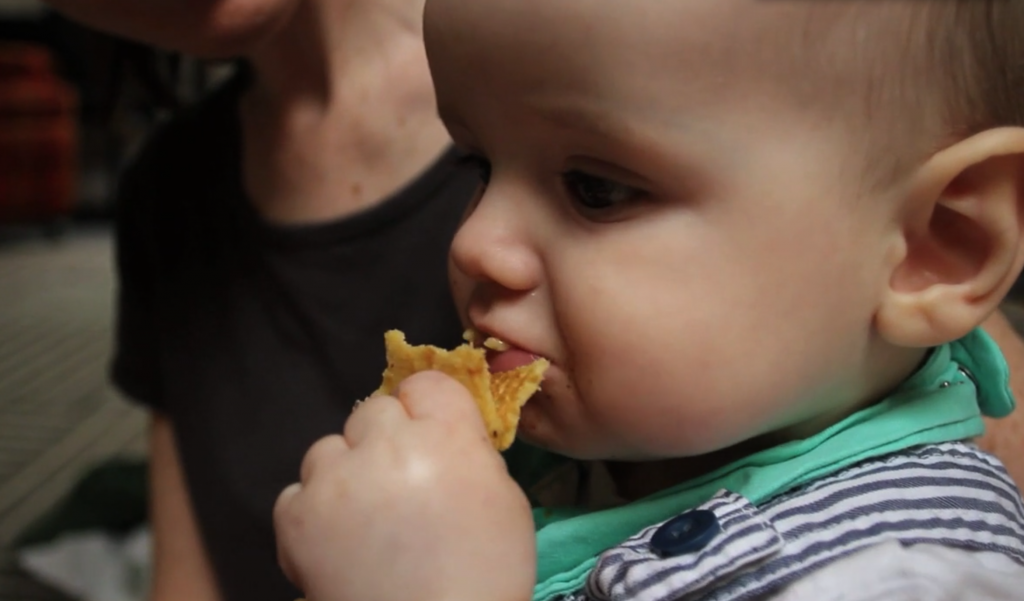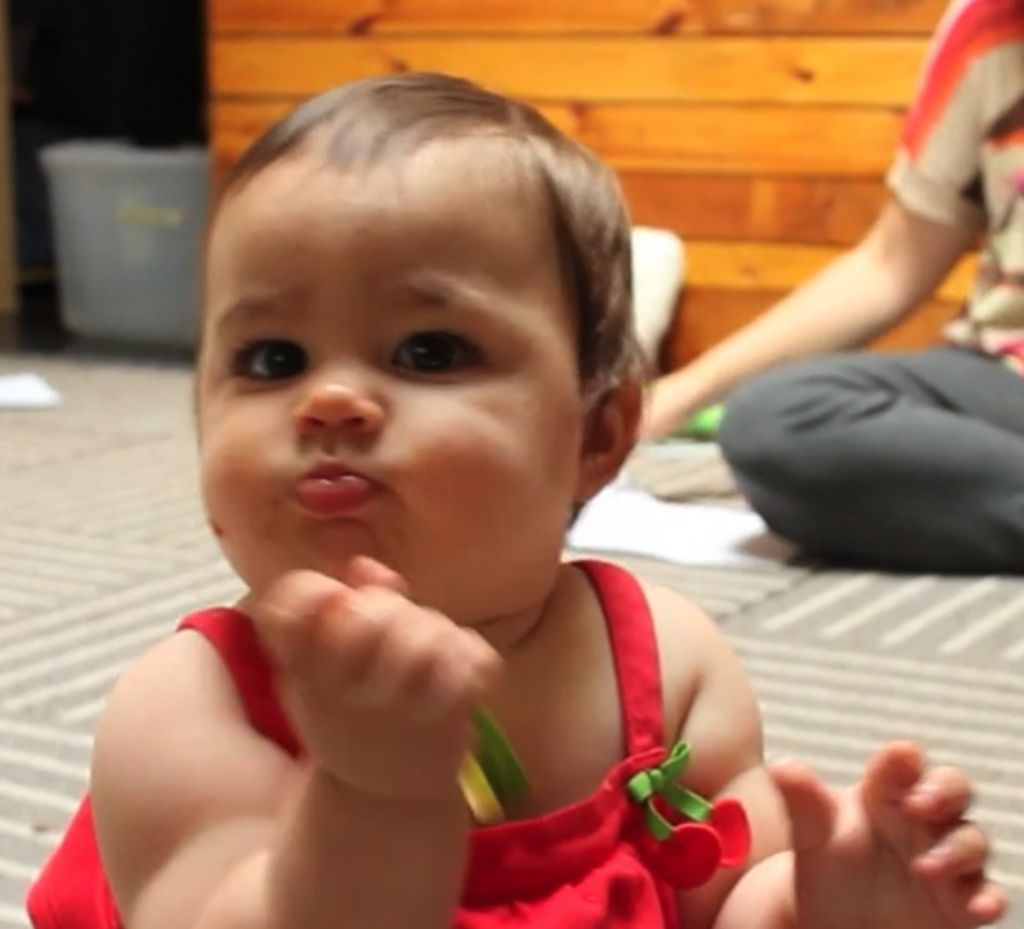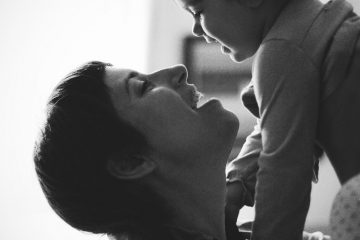What is Baby Led Weaning, Anyway?
Having a baby and knowing what steps to take when, and deciding which are right for your family, can be stressful and exhausting. I mean, you’re trying to do it all on no sleep and with a fussy, gassy, scream machine by your side. If you have/had a quiet baby, I don’t want to hear about it. Mine was a nightmare. So, when the idea of introducing food to your baby starts entering your mind, you might just want to run away or stock up on purees and puffs from the grocery store. Well, I just interviewed food educator Stacey B. Ornstein who’s saying that you don’t EVER have to buy, make or serve baby food to your kiddo. There’s a new feeding trend called “baby led weaning” that parents and kids seem to be psyched about. But, how does it work? Why would you do it? Is it really ok to never give your precious nugget baby food? Stacy teaches baby led weaning classes in NYC and cooking classes for 2 to 16 year olds through her company Allergic to Salad. Read what she has to say about the baby eating trend du jour…
What is baby-led weaning?
Baby-led weaning (BLW) is a method of starting infants on solid foods that does away with purees. Your child is eating what you’re eating right from the start!
Why is it becoming more and more popular?
There are a number of reasons I think BLW is increasing in popularity, and I think everyone has their own reasons for implementing it. The number one reason for me was that right from the start there would be no substitutions at mealtime. I was totally able to do away with “baby” food — and later “kid” food. We all ate the same thing! Additionally, it was a huge time and money saver, which is obviously attractive to both new parents, and those with multiple kids. No blenders, no jars, no transporting special equipment.
What are the benefits?
BLW puts your child in control of their eating. They’re developing positive eating habits, listening to their own hunger/ satiation cues. As you provide space for your child to explore food they tend to develop skills, like the hand-eye coordination and pincher grip, needed to get food into their mouth faster. They’re getting a variety of foods, tastes, textures and shapes right from the start so tend to be more open to new and different foods. The child is also a part of the family table right from the start, eating what everyone else is eating, but also learning (by watching at first) how all these foods are eaten.
How do you know when your baby is ready to start?
BLW looks for 2 cues before starting the eating adventure — one is that the infant is actively reaching for and attempting to put food in their mouth. A lot of parents come to my classes saying, “but he puts everything in his mouth!” Which is why the second cue, the ability to sit in the high chair unassisted, is also a key starting point. Some children are ready at 6 months, some have no interest until 8 months.
What are good first steps?
Looking for the 2 cues from your child before starting are key. I have a lot of parents who come to my classes for more guidance because it feels like a fairly new approach to starting solids– though actually has much more traditional roots, so definitely come to a class for support. From a parent standpoint, I think BLW can definitely require a little harnessing of personal zen at mealtime, but the ultimate payoff is amazing.
How do you make sure that your baby is getting enough nutrients?
I always recommend talking to a pediatrician. I tell parents– whether in my BLW class, or cooking classes, don’t look at a day, but a week. All of us– even adults, have our bad eating days. Too many BBQs, events, or you just weren’t up to eating. If you’re offering a variety of foods over the course of the week your child will likely be okay. In the beginning I do recommend upping iron-rich foods. My favorite recommendations are chicken liver pate and allowing your child to gnaw on a steak bone (moving bits removed).
Is there a go-to recipe that you recommend as a “first food”? Can you share the details with us?
“First food” really is dependent on the family. I mentioned my two favorites for increasing iron, which obviously don’t work in a vegetarian family (so I offer vegetarian-friendly suggestions). In class I hand out a few of my recipes. Ultimately though, I want to help families turn their favorite meals into BLW-friendly meals. We talk about how to cut and offer food in a more BLW-friendly method. For instance, my family is big on soup in winter, but I’m not offering an infant a steaming bowl of soup. I offer suggestions on how to serve that same steaming bowl to an infant. Each household will have a different favorite first food.
Stacey B. Ornstein, M.Ed. is a food educator, writer and recipe developer. She practiced BLW with her own son (now an adventurous 2 year old eater) and has since worked with hundreds of NYC families to start their own eating adventures. Since 2007 she has worked with thousands of kids and adults, teaching cooking and DIY Sensory Toy and Product Care classes, and implementing food- and nutrition-based programming in public schools, after-school programs, libraries, summer camps and more. In 2010 she founded the Allergic to Salad cooking school, teaching cooking classes for 2 to 16 year olds. As recipe developer, tester and writer, she has worked with Sunny Anderson’s Food Network show “Cooking for Real,” the New York Times’ Mark Bittman on his cookbook Kitchen Express, Martha Stewart Living’s Body & Soul, Sustainable Table, and Edible Queens, to name a few. Stacey also leads culinary tours of Mediterranean eats with the Institute of Culinary Education (ICE) around her home base of Astoria, Queens. She holds a Masters in History of Education from NYU and is a contributing editor to the textbook ContemporaryIssues in Curriculum (Allyn & Bacon, 2006; 2010; 2014). Visit www.AllergicToSalad.com / www.Facebook.com/AllergicToSaladNY / @AllergicToSalad






No Comment